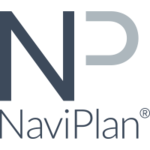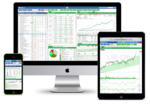Description

FactSet

Asset Manager
Comprehensive Overview: FactSet vs Asset Manager
FactSet
a) Primary Functions and Target Markets:
- Primary Functions: FactSet is a financial data and software company that provides integrated data and analytical applications for investment professionals. The primary functions include portfolio analysis, enterprise reporting, risk management, and research capabilities. FactSet offers real-time data, analytics, and financial modeling tools.
- Target Markets: Its main clients are institutional investors, investment managers, hedge funds, wealth managers, investment bankers, and other financial professionals.
b) Market Share and User Base:
- FactSet is a significant player in the financial data industry, with a substantial market share among investment professionals. It is considered one of the top competitors alongside Bloomberg, Thomson Reuters, and S&P Capital IQ. FactSet's user base includes a broad range of global financial institutions.
c) Key Differentiating Factors:
- FactSet stands out for its highly customizable user interface, comprehensive financial data coverage, and seamless integration capabilities. Its emphasis on client service and user training, along with a wide range of modules that can be added as needed, also distinguishes it from competitors.
Asset Manager (General Overview)
a) Primary Functions and Target Markets:
- Primary Functions: The term "Asset Manager" refers to companies or software products designed to manage clients' investments collectively in securities, real estate, and other assets. Software solutions specifically for asset management typically offer portfolio management, performance analysis, client reporting, and risk management functionalities.
- Target Markets: Asset management is targeted at investment firms, wealth management professionals, hedge funds, and institutional investors.
b) Market Share and User Base:
- Asset management solutions encompass a wide array of software products from various vendors. Therefore, the market share would vary greatly depending on the specific product or company in question. Some well-known software providers include BlackRock's Aladdin, SS&C Technologies, and SimCorp.
c) Key Differentiating Factors:
- Differentiation in asset management software often relies on the depth of analytics, ease of integration with existing systems, scalability, and specialized functionalities such as compliance monitoring or specific types of asset class management.
NaviPlan
a) Primary Functions and Target Markets:
- Primary Functions: NaviPlan is a financial planning software widely used by financial advisors and planners. It provides tools for goal-based financial planning, scenario analysis, retirement planning, estate planning, and investment strategies.
- Target Markets: NaviPlan is primarily used by financial advisors, wealth managers, and financial planning teams looking to deliver detailed and personalized financial plans to their clients.
b) Market Share and User Base:
- NaviPlan is a widely recognized product within the financial planning software market. It competes with other financial planning solutions like MoneyGuidePro and eMoney Advisor. Its market share is respectable, with a substantial user base within North America, particularly in the United States and Canada.
c) Key Differentiating Factors:
- NaviPlan is known for its comprehensive planning capabilities and detailed cash flow analysis. The software is highly regarded for its accuracy, its ability to handle complex financial scenarios, and its user-friendly interface. NaviPlan also offers flexibility in customizing plans according to diverse client needs, an essential feature for advisors seeking tailored solutions.
Comparison Summary
-
Primary Functions and Market Focus: FactSet is aimed at investment professionals with a focus on financial data and analytics, Asset Managers refer to generic solutions for asset handling, while NaviPlan is directed toward financial planning for individual client goals.
-
Market Share and User Base: FactSet enjoys a significant position in the financial data market, while the specific asset management software's market share depends on the provider. NaviPlan holds a solid place in the financial planning arena. Each serves a distinct segment of the financial industry, which limits direct competition.
-
Key Differentiators: FactSet is praised for its customizability and service, asset management software varies widely with a focus on analytics and integration, and NaviPlan is celebrated for detailed and accurate financial planning tools.
Each product serves a unique purpose within the finance industry, targeting specific user needs and focusing on different aspects of financial management and analysis.
Contact Info

Year founded :
1978
Not Available
Not Available
United States
Not Available

Year founded :
2005
Not Available
Not Available
Bangladesh
http://www.linkedin.com/company/assetmanagerlimited
Feature Similarity Breakdown: FactSet, Asset Manager
When comparing platforms like FactSet, Asset Manager, and NaviPlan, which serve the financial services industry albeit in slightly different capacities, it's useful to analyze their core features, user interfaces, and unique offerings. Here's a breakdown:
a) Core Features in Common
-
Data Integration and Analysis:
- All three platforms offer robust data integration capabilities, allowing users to import and analyze a wide range of financial data.
-
Portfolio Management:
- FactSet, Asset Manager, and NaviPlan each facilitate portfolio management, albeit tailored to different user needs and scopes (e.g., institutional vs. retail).
-
Reporting and Visualization:
- Each product provides tools for generating reports and visualizations, helping users interpret and present financial information effectively.
-
Risk Management:
- These platforms offer varying degrees of risk analysis features, aiding users in assessing and mitigating financial risks.
b) User Interfaces
-
FactSet:
- FactSet offers a highly customizable interface tailored for investment professionals. It focuses on delivering data-driven insights with extensive charting and data visualization options.
- Its interface is known for being dense, catering to experienced analysts who require large amounts of data at their fingertips.
-
Asset Manager (general consideration for tools like Morningstar Direct, Bloomberg Terminal, etc.):
- Interfaces in asset management tools can vary but often combine detailed data panels with intuitive dashboards. They prioritize ease of navigation and ensure quick access to relevant financial metrics.
- These often include drag-and-drop features for custom reporting, making them slightly more user-friendly than some data-heavy platforms like FactSet.
-
NaviPlan:
- NaviPlan focuses on financial planning for advisors. Its user interface is designed to be very intuitive, facilitating the process of creating and managing financial plans.
- It employs guided workflows and scenario planning tools specifically for client financial planning, making interface interactions straightforward and client-oriented.
c) Unique Features
-
FactSet:
- FactSet is renowned for its comprehensive data coverage and integration capabilities, allowing access to extensive databases for equities, fixed income, economics, and more.
- It also offers advanced financial modeling and quantitative analysis tools which are highly valued by institutional investors and analysts.
-
Asset Manager:
- Products under this umbrella, like Morningstar Direct, might offer industry-specific insights and powerful benchmarking, research, and screening capabilities for mutual funds and ETFs.
- Bloomberg Terminal, as an example, offers real-time financial data and analytics that are unmatched, combined with direct access to communication and trading features.
-
NaviPlan:
- NaviPlan is distinguished by its detailed financial planning capabilities, including cash flow and goal-based planning strategies.
- It offers a deep level of customization in planning scenarios which can be particularly beneficial for financial advisors focusing on retirement, estate, and tax planning.
In summary, while these platforms share core functionalities related to financial data handling and reporting, each has tailored its offerings to meet specific needs within the financial industry. FactSet stands out for its data integration prowess, Asset Manager platforms are valued for diverse asset management tools, and NaviPlan is unique in its comprehensive planning capabilities for financial advisors.
Features

Not Available

Not Available
Best Fit Use Cases: FactSet, Asset Manager
To effectively determine the best fit use cases for FactSet, Asset Manager, and NaviPlan, it's essential to understand the specific strengths and functionalities of each platform and how they align with the needs of different businesses or projects.
a) FactSet
Best Fit Use Cases:
-
Investment Banking: FactSet is an ideal choice for investment bankers who require comprehensive financial data and analytics. The platform provides real-time news, financial statements, and detailed company analyses, which are crucial for deal-making and financial advisory services.
-
Asset Management: For asset managers, FactSet’s powerful portfolio analytics and risk management tools help in making informed investment decisions and managing client portfolios efficiently.
-
Equity Research: Analysts benefit from FactSet's extensive database and tools for performing in-depth equity research and stock valuation, leveraging historical data and predictive analytics.
Industry Verticals & Company Sizes:
- Large Financial Institutions: Global banks, hedge funds, and asset management companies often utilize FactSet for its data breadth and advanced analytical capabilities.
- Consulting Firms: Large consulting firms that engage in financial advisory services also find FactSet useful for client insights.
b) Asset Manager
Best Fit Use Cases:
-
In-house Portfolio Management: Asset Manager is suitable for companies looking to manage investment portfolios internally, focusing on specific industry sectors or geographical regions.
-
Institutional Investors: Organizations requiring comprehensive allocation strategies and performance benchmarking benefit from the dedicated tools Asset Manager provides.
Industry Verticals & Company Sizes:
- Medium to Large Enterprises: Typically, companies with dedicated investment teams, such as insurance companies, pension funds, and large corporations with significant capital to invest.
- Family Offices and High Net Worth Individuals: These entities use Asset Manager for customized portfolio management and risk assessment.
c) NaviPlan
Best Fit Use Cases:
-
Financial Planning Firms: NaviPlan is a top choice for financial advisors and planners requiring detailed, goal-based financial planning for clients. It supports retirement planning, investment strategy, and cash flow analysis.
-
Wealth Management: Wealth advisors use NaviPlan for its ability to create tailored plans based on client goals, risk tolerance, and financial situations.
Industry Verticals & Company Sizes:
- Small to Medium Financial Advisory Firms: Independent advisors and boutique firms benefit from NaviPlan’s cost-effective yet robust planning tools.
- Retail Banks Offering Advisory Services: Smaller banking institutions that offer personal financial planning as part of their services.
d) Differentiation in Industry Verticals or Company Sizes
-
FactSet serves large, global financial institutions that require extensive data and complex analytics. Its offerings are well-suited for organizations that operate in highly competitive investment environments.
-
Asset Manager caters to businesses that have significant capital to manage but may not need the complexity or breadth of data provided by platforms like FactSet. It is economical for firms focusing on certain asset types or regions.
-
NaviPlan is aligned with firms that prioritize client-centric financial planning over high-frequency trading or data-driven investment strategies. It is more accessible for small to medium-sized enterprises that cannot afford the larger, more comprehensive systems but still need advanced financial planning solutions.
These products each offer specialized features catering to the unique needs of different sectors within the finance industry, from large-scale data analytics to personalized financial planning.
Pricing

Pricing Not Available

Pricing Not Available
Metrics History
Metrics History
Comparing teamSize across companies
Conclusion & Final Verdict: FactSet vs Asset Manager
To provide a comprehensive conclusion and final verdict on FactSet, Asset Manager, and NaviPlan, let's examine each product in terms of value, pros and cons, and recommendations for users deciding between them.
Conclusion and Final Verdict:
a) Best Overall Value:
Determining the best overall value depends on the specific needs and context of the user. However, generally speaking:
- FactSet offers high value for users needing comprehensive financial analytics, data integration, and specialized investment tools, especially for institutional investors or finance professionals who require extensive data and analytics capabilities.
- Asset Manager is well-suited for firms focused on robust portfolio management and offers strong capabilities in investment analysis and front-to-back office operations.
- NaviPlan provides excellent value for financial planners and advisors looking for detailed financial planning and client engagement tools.
If a user prioritizes financial data analytics and integration, FactSet likely offers the best value. For those focused on investment management, Asset Manager may be more suitable. For financial advisors, NaviPlan offers tailored functionalities.
b) Pros and Cons:
FactSet:
- Pros: Extensive financial data coverage, robust analytical tools, highly customizable, integration capabilities, and strong market reputation.
- Cons: High cost, steep learning curve, and potentially overwhelming for users with basic needs.
Asset Manager:
- Pros: Comprehensive portfolio management features, integration with back-office functions, scalability, and strong focus on investment operations.
- Cons: May lack in-depth financial planning tools, cost can be significant for smaller firms, integration complexity.
NaviPlan:
- Pros: Detailed financial planning and analysis capabilities, user-friendly interface, strong client engagement features, and customizability for various planning scenarios.
- Cons: Limited in investment data and analytics compared to FactSet, might not be suitable for institutional-level analytics, could require additional complementary tools for full functionality.
c) Recommendations for Users:
-
Define Your Needs: Start by clearly identifying your organization’s specific needs, priorities, and budget. Consider whether your focus is on investment management, financial planning, or data analytics.
-
Evaluate Integration Needs: Consider how well each product integrates with your existing systems and whether it offers the necessary data and operational support.
-
Consider User Experience: Assess the user interface and ease of use. If you require a less steep learning curve, NaviPlan might be more suitable.
-
Assess Scalability: Depending on your growth plans, you should consider how each software can scale with your operations. FactSet and Asset Manager offer scalability for larger operations, while NaviPlan focuses more on financial advising scales.
-
Budget Constraints: Carefully evaluate the pricing structures in relation to the value offered and your budgetary constraints.
Ultimately, users should conduct a detailed requirements analysis and consider test trials or demos where possible to best align their choice with their operational needs and strategic goals.




